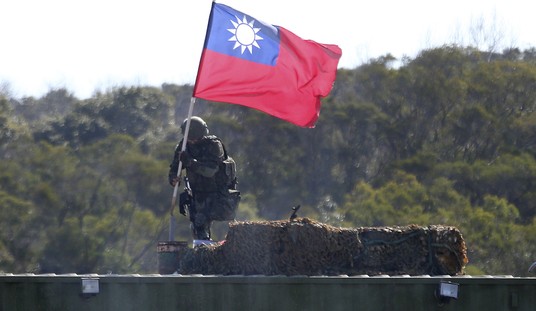 Nina and I caught The Stoning of Soraya M on Saturday at the Camera Three theater in San Jose. On the one hand, the film’s timing is exquisite, given the backdrop of the bloody crackdown by Iran’s mullahs against its “election” dissenters. On the other, this is the sort of film that in a just world, Hollywood should have made immediately after 9/11; if not about Iran’s brutal theocratic regime, then in 2002 about the victims of the Taliban in Afghanistan, or in 2003 about the victims of Saddam Hussein in Iraq.
Nina and I caught The Stoning of Soraya M on Saturday at the Camera Three theater in San Jose. On the one hand, the film’s timing is exquisite, given the backdrop of the bloody crackdown by Iran’s mullahs against its “election” dissenters. On the other, this is the sort of film that in a just world, Hollywood should have made immediately after 9/11; if not about Iran’s brutal theocratic regime, then in 2002 about the victims of the Taliban in Afghanistan, or in 2003 about the victims of Saddam Hussein in Iraq.
Naturally, since the silence from establishment Hollywood on such topics has been deafening, their enablers in the media are all to quick to attack this remarkably powerful film. No wonder Apple has retired its “Think Different” moto — apostasy must be punished in the legacy media.
As Christian Toto writes, “How dare a filmmaker shed light on an atrocity committed in an Islamic country?” Christian adds:
You can make the U.S. military the bad guy, or a redneck, or a Bible thumper, but you simply do not cast blame on people of Muslim faith.Even if it’s all based on a true story.
What other message can be found from some reviews of the new film “The Stoning of Soraya M.,” which tells the true story of an Iranian woman stoned to death by her fellow villagers for committing adultery.
Let’s let Jan Stuart of The Washington Post hurl the first stone:
” … the worst kind of exploitive Hollywood melodrama, presented under the virtuous guise of moral outrage.”
The New York Times, a bastion of fair and balanced reportage, allows Stephen Holden to let his ideological blinders guide the way:
“Mr. Negahban’s Ali, who resembles a younger, bearded Philip Roth, suggests an Islamic fundamentalist equivalent of a Nazi anti-Semitic caricature.”
You’d think Holden would give the filmmakers courage points after pointing out this hard truth:
“… filmed in an unidentified location to avoid possible reprisals,”
Nope. “Courageous” remains a label exclusively for actors who repeat exactly what their fellow actors think, but do so loudly.
Let’s wrap things up with The Onion, the satirical paper which can’t summon the stomach to mock the new president – talk about cowardly behavior from alleged humorists – but allows its film reporters to wax ideological whenever they feel like it. (hat tip: Threedonia)
“It takes zero political courage to speak out against the obvious barbarism of public stonings or the oppressive patriarchy of sharia law, but the film whips out the megaphone anyway, eager to extrapolate the martyrdom of an innocent woman into a broader condemnation of the Muslim world.”
If it takes no political courage to speak out … then why is this arguably the first film to do so?
Well, certainly the first film post-9/11, when Big Hollywood (to coin a phrase) went into a hibernation it has yet to emerge from.
Speaking of the New York Times’ Stephen Holden, Newsbusters caught this passage from him:
“The Stoning of Soraya M.,” a true story of religiously sanctioned misogyny and mob violence in an Iranian village, thoroughly blurs the line between high-minded outrage and lurid torture-porn.
Not since “The Passion of the Christ” has a film depicted a public execution in such graphic detail. In the approximately 20 minutes during which the killing unfolds, the camera repeatedly returns to study the battered face and body of the title character (Mozhan Marno) as she is stoned to death. Buried up to her waist in a hole dug for the occasion, she is pelted with rocks and profanity by the male villagers, including her father, husband and two sons, until she dies.
The condemned woman is innocent of the charge of adultery brought against her by her sadistic husband, Ali (Navid Negahban), who wants to get rid of her so he can marry a 14-year-old girl. According to ancient Islamic law, a wife’s adultery is punishable by death. Ali pressures the corrupt local bigwigs to prosecute her based on the rumors he ignited and false evidence they coerce from a widower for whom she has worked as a housekeeper.
Torture porn? Was Holden watching the same movie I was? (WARNING: SPOILERS TO FOLLOW) Given the above passage, and the presence of James Caviezel, who bookends the film, I went in expecting the worst. According to Toto, paraphrasing director Cyrus Nowrasteh, “about five or so people typically [left] the theater during [Soraya’s] test screenings once the execution starts — but roughly half return to watch the film’s finale.” The stoning sequences were certainly painful to watch, but actually less graphic than the Passion. And given the current lurid state of real torture porn in Hollywood’s popcorn flicks and the ability of digital effects to grotesquely depict physical injury, could have been far, far worse.
Is it a perfect film? Not quite. The heart of the film is how a small village can so quickly descend to a mob mentality and primitive groupthink. When the film entered its final act, and Soraya was found “guilty”, I felt a certain level of tension drop, the suspense of the film’s set-up was over and sentence was soon to be passed. However, in the film’s favor, the period between the sentencing and execution to rapidly follow reminded me a bit of the last scenes of Sophie Scholl: The Final Days, during which the titular character living under an earlier bloodthirsty fascist regime (and not coincidentally, one that’s much admired by Iran’s current president) discovers that she doesn’t have weeks before her expected execution, but mere hours, and quickly says her goodbyes and prepares for the worst.
Of course, in that film, Scholl’s parents were understandably sympathetic to their daughter’s rapidly impending doom; here, Soraya’s father literally casts the first stone.
Which brings up another flaw in the film. Much like the plight of women in the Middle East in general post 9/11, Soraya will no doubt be ignored by feminist groups, which is all the more ironic: with exception of Caviezel’s character, the men depicted here are universally manipulative and scheming. (Though it could have worse, I suppose: as Nowrasteh says, “If you read the book you would see just how far I went in the writing the script,“ he says, adding even the selfish husband who accuses his wife of adultery is given flashes of humanity. “In the book there was no shading.”)
In contrast, the women in The Stoning of Soraya M are mostly saint-like, or in the case of the character played by Shohreh Aghdashloo, a secular-saint; Aghdashloo’s character, who drives the film, looks, acts, and speaks like Iran’s answer to Oriana Fallaci.
Still, these are minor flaws overall. This is a powerful, must-see film. As Dennis Prager writes, “See This Film (or Stop Complaining About Hollywood):”
If you want to understand the type of people who run Iran, see this film. If you want to understand why men and women risk their lives to demonstrate against the fascist theocracy that rules Iran, see this film. The film is about the type of people who become “supreme leader” (Ali Khamanei) or president of Iran (Mahmoud Ahmadinejad). It is about their mendacity, their use of religion to commit barbarity, and, of course, their despicable treatment of women.
And don’t see it solely in order to understand what the dissidents in Iran are fighting — though that would be an entirely valid reason. See it also because it is a powerful theatrical and emotional experience. Washington Post reviewer Dan Zak wrote that he wept while watching the movie. The Wall Street Journal described “The Stoning of Soraya M.” in these words: “This is classic tragedy in semi-modern dress that means to horrify, and does so more successfully than any film in recent memory.” Los Angeles Times film reviewer Kevin Thomas wrote that the film, achieves “the impact of a Greek tragedy through its masterful grasp of suspense and group psychology, and some superb acting.” And Claudia Puig of USAToday called the film “emotionally explosive,” a “shattering and powerful drama.”
On the other hand, Amnesty International loathed the film. Which is another good reason to see it. This organization is morally confused. It has become a leftist organization in the guise of a human rights organization. It calls the film “sensationalist” because “the audience response is likely to be disgust and revulsion at Iranians themselves, who are portrayed as primitive and blood-thirsty savages.” I wonder if there are 10 people who see this film who will then conclude that Iranians in general — as opposed to many religious fundamentalists among them — are “primitive and bloodthirsty savages.”
Furthermore, Amnesty International argues, Iranians and foreign human rights organizations are already fighting for women and against such atrocities as stoning. Therefore, the film is unnecessary. If you don’t follow that argument, you are not alone.
Finally, the most important reason to see the film could be this:
Many of us lament Hollywood’s lack of courage, its lack of moral seriousness, and its political correctness. Here, then, is a courageous, morally deep, and politically incorrect film that mainstream reviewers — as cited above — have lavished praise on. It should be the ideal film for serious Americans who properly complain about Hollywood’s offerings. But if a riveting drama with a courageous theme, Oscar-level acting, which is as relevant as today’s headlines, fails at the box office, Hollywood will have been vindicated.
“It therefore seems clear to me that those who do not see this film have forfeited the right to complain about Hollywood”, and I can’t help but concur.
And see it for this reason: at Big Hollywood, John T. Simpson asks, “Will ‘The Stoning Of Soraya M.’ Get An Oscar Nod?”
Much like Nowrasteh’s earlier TV movie on 9/11 being buried by Disney and ABC, the odds of a positive answer to Simpson’s question seem remarkably slim. But as these films demonstrate, truth is bigger than even Hollywood can keep permanently bottled up. See it for yourself.
Update: Welcome fellow Big Hollywood and Hot Air readers. As found in the comments below, Paula Perez’s review is also well worth your time.










Join the conversation as a VIP Member